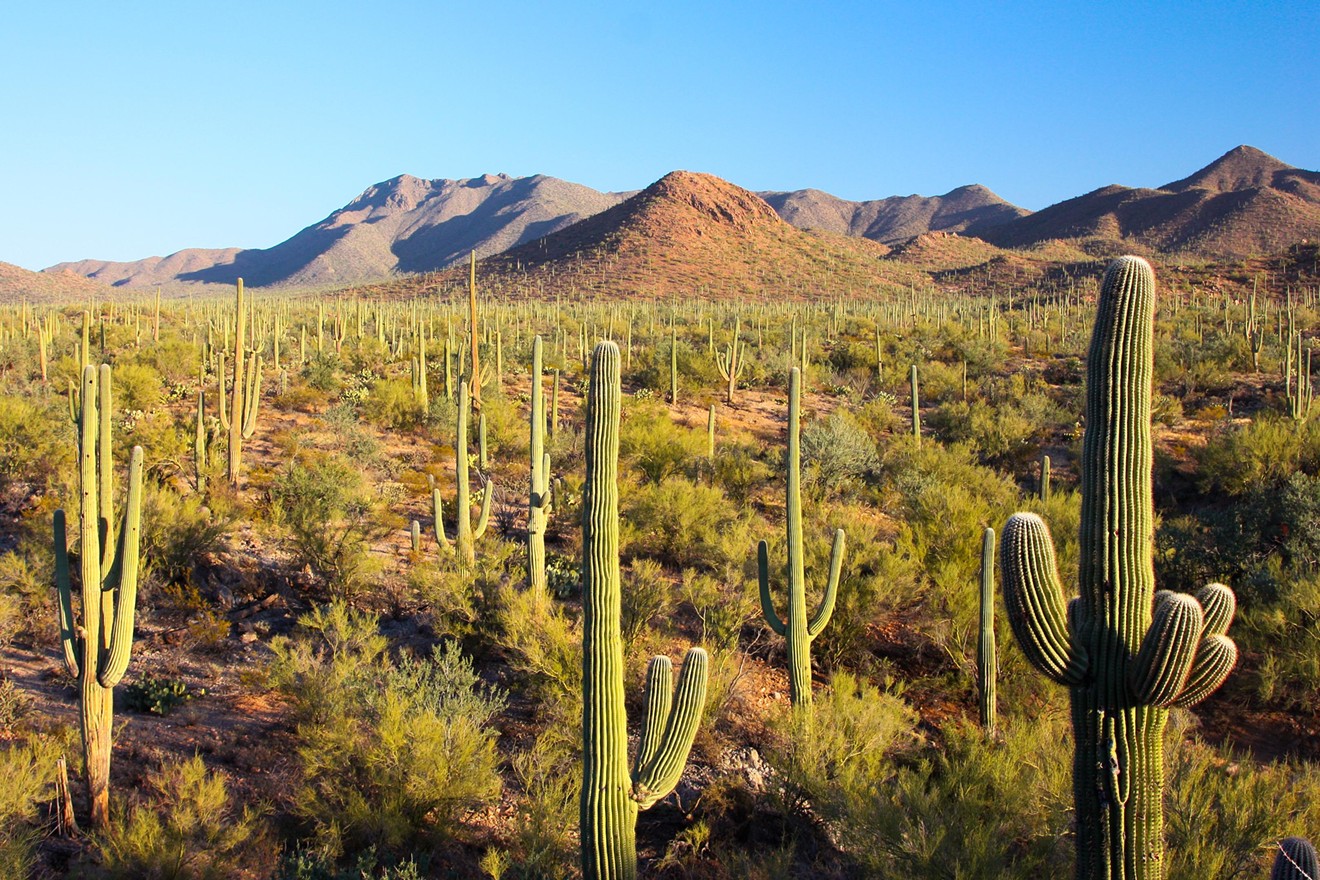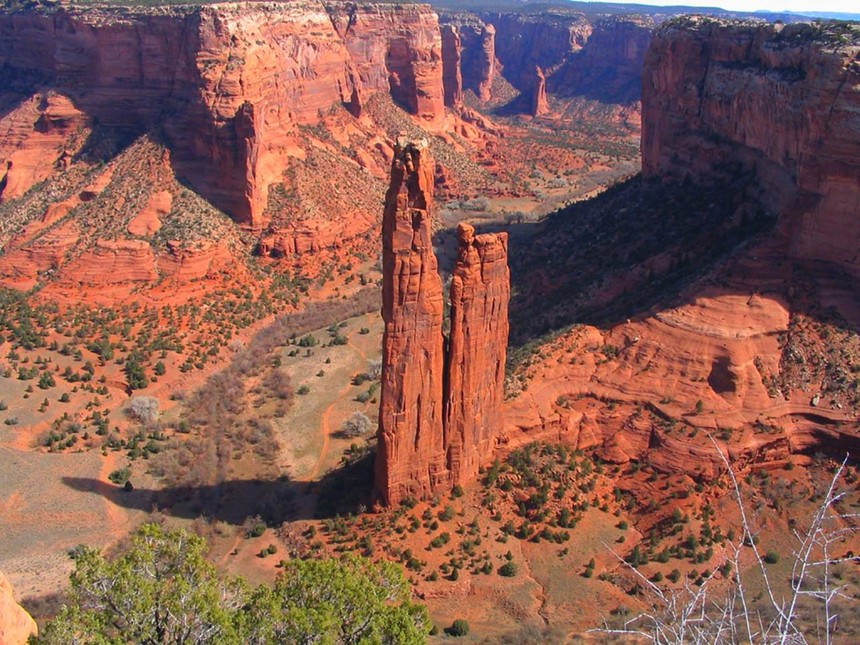When President Woodrow Wilson signed the bill that created the National Park Service, it read in part, "and by such means as will leave them unimpaired for the enjoyment of future generations." More than a century later, national parks and monuments continue to do just that, boasting everything from impressive natural wonders to the ruins of past inhabitants
Maybe it's been a while since you explored them. But now is a great time to get out there and make friends with nature, because Free Park Day is happening on April 20. It's the start of National Park Week, which runs through April 28.
Other Free Park Days in 2024 are June 19, Aug. 4, Sept. 28 and Nov. 11.
At last count, 429 areas have been assigned national park status across the country — including everything from wildlife refuges to forests to recreation areas. More than 100 of these federal lands charge entrance fees, be it for individuals or motor vehicles.
In Arizona, eight monuments and three parks typically charge admission fees, so those are the best places to begin if you’re all about saving money during free park days. We’ve marked them with an asterisk, to save you some legwork. And we’ve listed all the state’s national parks and monuments here, as a friendly reminder that they’re all worth a visit.
During fee-free days, you’ll find that entrance fees, commercial tour fees and transportation entrance fees are all waived. However, camping, third-party tours, concessions and certain reservation fees may still apply at the park's discretion. It’s worth hopping on the National Park Service website before you head out, just to check the fine print – including any timely alerts about trail closures or weather conditions.
Beyond our state parks and monuments, Arizona has plenty of designated historic sites, national parks, memorials and recreation areas. Happily, all are included in Free Park Day.
Canyon de Chelly
National MonumentChinleIndigenous peoples called Canyon de Chelly home for nearly 5,000 years, building pit houses and taking advantage of the natural water resources. Today, members of the Navajo community still live, farm, and raise livestock on the canyon floor. Scenic drives and a single public hiking trail offer opportunities for self-guided tours, but because the canyon is in Navajo-held land, tours down to the base or overnight camping are only allowed with certain permits.
Casa Grande Ruins
National MonumentCoolidgeThe Casa Grande Ruins National Monument preserves pueblos from the Hohokam culture, including "The Big House." The area is perfect for picnicking and brief, self-guided tours after a visit to the museum.
Chiricahua
National MonumentWillcoxNicknamed "A Wonderland of Rocks," which admittedly doesn't seem all that appealing at first, Chiricahua National Monument is an impressive site at nearly 12,000 acres, boasting numerous unique nature-made formations. Explorers can enjoy eight miles of paved driving trails or 17 miles of unpaved hiking paths, ideal for viewing the natural beauty of structures like the Kissing Rocks or Duck on a Rock.
Grand Canyon*
National ParkGrand CanyonArizona is home to one of the most popular parks in the country. Open year-round, the South Rim of the Grand Canyon is about an hour and a half away from Williams and Flagstaff, while the North Rim, the less traveled but equally breathtaking area, is located in a more remote area on the Utah side of the canyon. Drive up for a day trip, an overnight excursion, or a multiday descent into the canyon, but be sure to give yourself a few hours minimum to explore the rims alone. Guided tours, mule trips, and river trips are all popular events, so plan accordingly.
Grand Canyon: Parashant National Monument
National MonumentNorthern ArizonaGiven the technical, hyphenated name of the Parashant National Monument, the monument is essentially the land surrounding and including its namesake. Roughly the size of Rhode Island (1,212 square miles), the expansive lands offers an ideal place for camping, off-road driving, and night sky observing. Areas are isolated, so prepare accordingly.
Montezuma Castle*
National MonumentCamp VerdeIt's 800 years old, has 20 rooms, and will certainly outlast every McMansion you'll pass on the drive north up Interstate 17. Montezuma Castle National Monument is a crowd-drawer, featuring self-guided chances to explore the five-story cliff dwelling through thick sycamore and steep limestone.
Navajo
National MonumentBlack MesaUsing natural sandstone and built on the remains of prehistoric homes before them, the Tsegi Phase pueblo villages feature architectural details still seen in modern-day building, like support beams and masonry walls. Then again, they also employ hand and foot holds. Navajo National Monument is a place for visitors to explore these creations through ranger guided hikes and Betatakin Canyon rim trails. There are two on-site campgrounds, Sunset View and Canyon View, available for overnight trips.
Organ Pipe Cactus*
National MonumentAjoAn idyllic place for scenic drives and wilderness watching, Organ Pipe Cactus National Monument boasts a diverse system of landscapes, animals, and 640 types of desert vegetation. Bring plenty of water and food: The closest town, Lukeville, is practically barren and 5 miles away, just north of the Mexico border.
Petrified Forest *
National ParkPetrified Forest National ParkNortheastern Arizona is home to some of the state's more unexpected natural treasures, and Petrified Forest National Park is certainly among them. The 146-square-mile park is known for its fossils of everything from wood to alligators and encompasses the vibrant badlands of the Painted Desert. Plan for the drive to take two or three hours, depending on stopping and gawking. Or, make a day of it and stretch your legs with hikes around Blue Mesa, Crystal Forest, Martha’s Butte, Painted Desert Rim or Red Basin.
Pipe Spring *
National MonumentFredoniaIt seems fitting that a dry desert would celebrate an area where water runs free. Settlers from Native Americans to pioneers and ranchers created homes in the area. The Pipe Spring National Monument region now houses museums and guided tours that offer insights into the region’s history.
Saguaro*
National ParkTucsonTalk about the Southwest or desert to just about anyone worldwide and they'll come back with one chief descriptor: cacti. The spiny vegetation is synonymous with our state, and Saguaro National Park just outside Tucson is a place to see them in all shapes and sizes. Tours are available for hikers, bikers, and drivers led by rangers. The park is separated into an east sphere and a west sphere 45 minutes apart (Tucson sits in the middle), so plan ahead if you want to tackle both.
Sunset Crater Volcano*
National MonumentFlagstaffNearly 900 years ago the Sunset Crater mountain — which wasn't really a mountain at all — erupted, covering the area with lava and changing the landscape forever. Sunset Crater Volcano was given national monument status in 1930 to preserve the geological implications brought on by embers, which gave way to unique, colorful, rugged terrain.
Tonto*
National MonumentRooseveltRediscovered throughout the Sonoran Desert, cliff dwellings were the ideal protection against predators and vying tribes during the 13th through early 15th centuries. The Tonto National Monument offers access to the Tonto Basin, with views of Roosevelt Lake, and a walk-through of a 700-year-old home surrounded by striking wildlife.
Tuzigoot*
National MonumentClarkdaleThe Tuzigoot community and its crowning hilltop achievement, Tuzigoot National Monument (a 100-room, multiple-story creation) was built by the Sinagua people (who also created Montezuma's Castle) in 1000 A.D. and was abandoned 400 years later. Today the monument, comprising 42 acres, is popular with both museum- and trail-goers.
Walnut Canyon*
National MonumentFlagstaffJust outside of Flagstaff, the limestone and pine-covered walls of Walnut Canyon are as beautiful now as they were practical then. Hidden in the sides of the canyon are numerous cliff dwellings also built by the Sinagua people between 1125 and 1250 A.D. Camping and overnight stays are not permitted at Walnut Canyon National Monument, but visitors can hike along the canyon's rim to get a closer look.
Wupatki*
National MonumentFlagstaffResearchers and preservationists have dug up many items traded along the Pacific and Gulf of Mexico in the ancient-esque ruins of Wupatki National Monument. Set aside a solid two hours to tour all distinct five pueblo areas, including Wupatki and Wukoki. Expect a half-mile hike in between each point. Pack a lunch and some binoculars; neighboring Doney Mountain Trail offers bird's-eye views of the entire area.
This article was originally published on August 22, 2014. It was most recently updated on April 16, 2024.





















